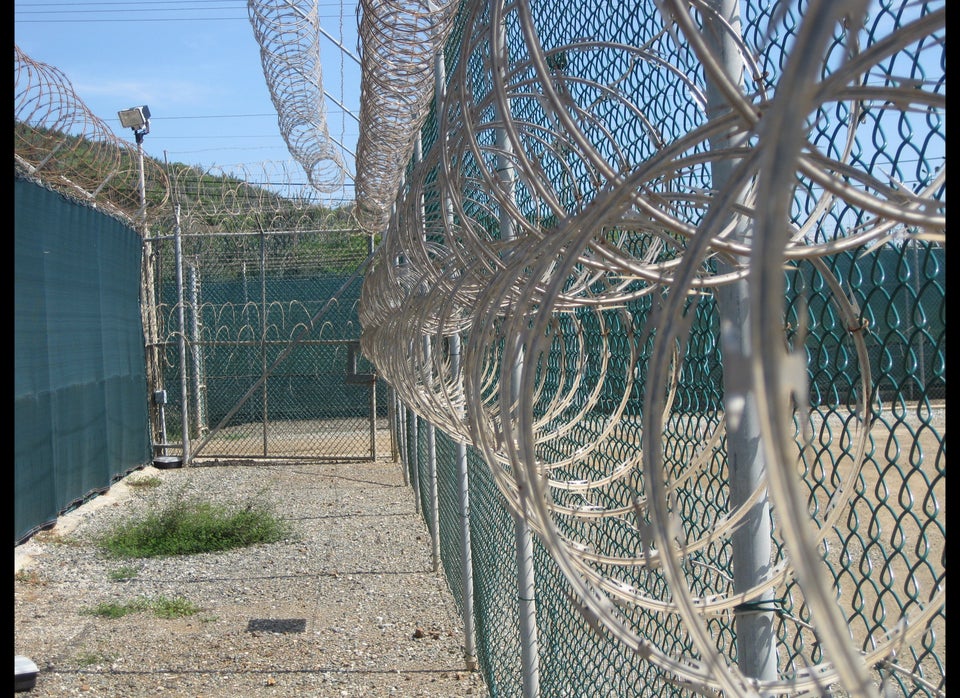By Don Thompson, The Associated Press
SACRAMENTO, Calif. -- State and federal prison officials on Monday sought a judge's permission to force-feed inmates if necessary as a statewide hunger strike entered its seventh week.
California officials said they fear for the welfare of nearly 70 inmates who have refused all prison-issued meals since the strike began July 8 over the state's holding of gang leaders and other violent inmates in solitary confinement that can last for decades.
They are among nearly 130 inmates in six prisons who were refusing meals. When the strike began it included nearly 30,000 of the 133,000 inmates in California prisons.
Prison officials and attorneys representing the inmates all are increasingly fearful that some inmates will soon die as their vital organs fail. The filing came as prison officials and inmates' attorneys argued over whether strikers should be allowed to voluntarily begin a liquid diet.
Prison policy is to let inmates starve to death if they have signed legally binding do-not-resuscitate (DNR) requests.
But state corrections officials and a federal receiver who controls inmate medical care asked U.S. District Judge Thelton Henderson of San Francisco for blanket authority to feed inmates who may be in failing health, including those who recently signed requests that they not be revived or who may have signed such requests under duress.
Henderson oversees the ongoing lawsuit over inmates' medical care.
"Patients have a right to refuse medical treatment. They also have a right to refuse food," said Joyce Hayhoe, a spokeswoman for the receiver's office.
However, "If an inmate gets to the point where he can't tell us what his wishes are, for instance if he's found unresponsive in his cell, and we don't have a DNR, we're going to get nourishment into him. That's what doctors do. They're going to follow their medical ethics," Hayhoe said. "We'd take any and all measures to sustain their life."
The process, which prison officials call "refeeding," could include starting intravenous fluids or snaking feeding tubes through inmates' noses and into their stomachs.
Prison officials already can seek a court order forcing an individual inmate to take food, though they have not done so. Now they and the receiver's office are jointly asking for blanket permission to take that step without seeking orders on a case-by-case basis.
The federal and state officials were joined in the request by the Prison Law Office, a Berkeley-based nonprofit that represents inmates' welfare in ongoing lawsuits that led to a federal takeover of the prison health care system and a requirement that the state sharply reduce its inmate population to improve conditions.
They want Henderson to let the chief medical executive at each prison act if a hunger striker is at risk of "near-term death or great bodily injury" or is no longer deemed competent to give consent or make medical decisions.
Moreover, do-not-resuscitate directives would not be honored if the medical executive reasonably believes the inmate was coerced into signing the request or if an attorney representing the inmate revokes the request.
Do-not-resuscitate orders signed by a hunger striker at or near the beginning of the strike or during the hunger strike would automatically be deemed invalid.
They are among nearly 130 inmates in six prisons who were refusing meals. When the strike began it included nearly 30,000 of the 133,000 inmates in California prisons.
Prison policy is to let inmates starve to death if they have signed legally binding do-not-resuscitate requests.
But state corrections officials and a federal receiver who controls inmate medical care received blanket authority from U.S. District Judge Thelton Henderson of San Francisco to feed inmates who may be in failing health.
The order includes those who recently signed requests that they not be revived.
Henderson oversees the ongoing lawsuit over inmates' medical care. The filing Monday came as prison officials and inmates' attorneys argued over whether strikers should be allowed to voluntarily begin a liquid diet.
"Patients have a right to refuse medical treatment. They also have a right to refuse food," said Joyce Hayhoe, a spokeswoman for the receiver's office.
However, "If an inmate gets to the point where he can't tell us what his wishes are, for instance if he's found unresponsive in his cell, and we don't have a DNR, we're going to get nourishment into him. That's what doctors do. They're going to follow their medical ethics," Hayhoe said. "We'd take any and all measures to sustain their life."
The process, which prison officials call "refeeding," could include starting intravenous fluids or snaking feeding tubes through inmates' noses and into their stomachs.
Prison officials already can seek a court order forcing an individual inmate to take food, though they have not done so. Now they and the receiver's office are jointly asking for blanket permission to take that step without seeking orders on a case-by-case basis.
The federal and state officials were joined in the request by the Prison Law Office, a Berkeley-based nonprofit that represents inmates' welfare in ongoing lawsuits that led to a federal takeover of the prison health care system and a requirement that the state sharply reduce its inmate population to improve conditions.
They want Henderson to let the chief medical executive at each prison act if a hunger striker is at risk of "near-term death or great bodily injury" or is no longer deemed competent to give consent or make medical decisions.
Moreover, do-not-resuscitate directives would not be honored if the medical executive reasonably believes the inmate was coerced into signing the request or if an attorney representing the inmate revokes the request.
Do-not-resuscitate orders signed by a hunger striker at or near the beginning of the strike or during the hunger strike would automatically be deemed invalid.
